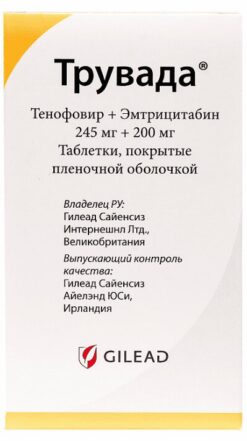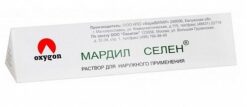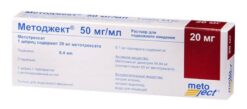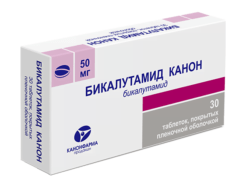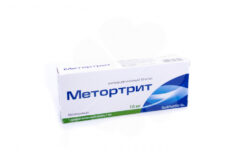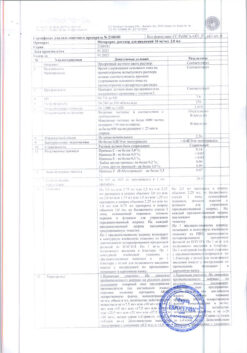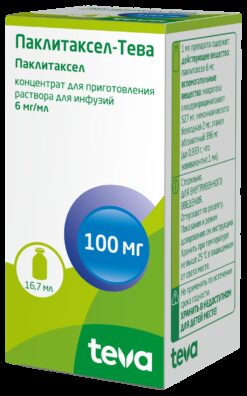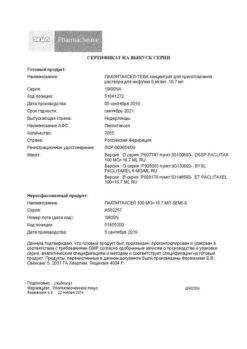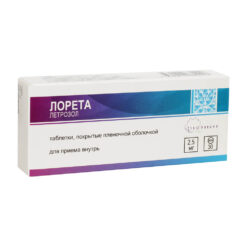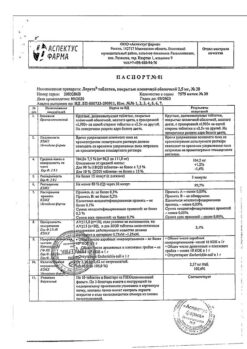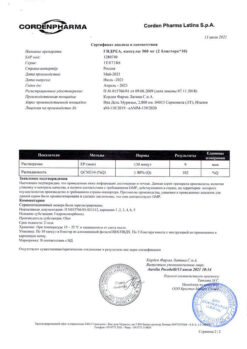No products in the cart.
Description
Pharmgroup: Antitumor drug. Protein tyrosine kinase inhibitor.
Pharmacological effect: Ibrutinib is a potent low molecular weight inhibitor of Bruton tyrosine kinase (TKB). Ibrutinib forms a covalent bond with the cysteine residue (Cys481) in the active center of TKB, resulting in persistent inhibition of enzymatic activity. TKB, which is a member of the Tss kinase family, acts as an important signaling molecule in metabolic pathways related to the signaling activity of B-cell antigen receptors (BCRs) and cytokine receptors. The BCR signaling pathway has been implicated in the pathogenesis of several B-cell malignancies, including mantle cell lymphoma, diffuse large B-cell lymphoma, follicular lymphoma, and B-cell chronic lymphocytic leukemia. The key role of TCB in the signaling activity of B-cell surface receptors leads to the activation of signaling pathways necessary for B-cell migration, chemotaxis and adhesion. According to the results of preclinical studies ibrutinib inhibits proliferation and survival of malignant B-cells in vivo, as well as cell migration and adhesion to substrates in vitro.
Lymphocytosis.
At the beginning of therapy, the majority of patients (75%) with chronic lymphocytic leukemia treated with Imbruvik showed a reversible increase in lymphocyte count (i.e., by 50% or more from baseline with absolute values above 5000/μL), often accompanied by a reduction in lymphadenopathy. This effect was also observed in some patients (35%) with relapsed or refractory mantle cell lymphoma treated with Imbruvic. The observed lymphocytosis is a reflection of the pharmacodynamic effect and should not be regarded as disease progression in the absence of other clinical manifestations. In both diseases, lymphocytosis usually develops within the first few weeks of treatment with Imbruvic (median 1.1 weeks) and usually resolves with median 8.0 and 18.7 weeks in patients with relapsed or refractory mantle cell lymphoma and chronic lymphocytic leukemia, respectively.
A significant increase in the number of circulating lymphocytes (i.e. over 400,000/μL) was observed in some patients.
Pharmacokinetics: Absorption.
Ibrutinib is rapidly absorbed after oral administration with a median time to maximum concentration (Tmax) of 1-2 hours. There are no significant differences in the pharmacokinetics of ibrutinib in patients with various B-cell malignancies. The plasma concentration of ibrutinib increases proportionally with increasing dose up to 840 mg. The equilibrium value of the area under the concentration-time curve (AUC) in patients at a dose of 560 mg is 953±705 ng×h/mL (mean ± standard deviation). Administration with food leads to an increase in ibrutinib concentration by approximately 2-fold compared to fasting (without food from the previous evening).
Distribution.
Reversible binding of ibrutinib to human plasma proteins was 97.3%, with no concentration dependence in the concentration range of 50 to 1000 pg/ml. The apparent equilibrium volume of distribution (Vd,ss/F) is approximately 10,000 l.
Metabolism.
Ibrutinib is metabolized primarily by the CYP3A4/5 cytochrome P450 isoform to form primarily a dihydrodiol metabolite, whose inhibitory activity against TKB is approximately 15 times lower than that of ibrutinib. The systemic equilibrium concentration of the dihydrodiol metabolite is comparable to that of the parent drug. According to the results of in vitro studies, the participation of CYP2D6 isoenzyme in oxidative metabolism of ibrutinib is less than 2%. In addition, according to human mass balance studies, the pharmacokinetic profile in patients with weak and high CYP2D6 isoenzyme activity (according to genotyping data) was similar. Thus, no precautions are required in patients with different CYP2D6 isoenzyme genotypes.
Excretion.
Observed clearance (CL/F) is approximately 1000 l/h. The half-life of ibrutinib is 4-6 hours.
After a single oral administration of [14C]-ibrutinib (radioactively labeled) in healthy volunteers, approximately 90% of the radioactivity was excreted within 168 hours, with most (80%) excreted through the intestine and less than 10% through the kidneys.
Unexcreted ibrutinib accounted for about 1% of the excretion products in the feces and was absent in the urine, the remainder being metabolites.
Special patient groups:
Elderly patients (65 years and older).
According to population pharmacokinetics analysis, age has no significant effect on the clearance of ibrutinib from the bloodstream.
Children (18 years and younger).
No studies of the pharmacokinetics of Imbruvic in patients younger than 18 years have been conducted.
Gender.
Results of a population-based pharmacokuetic analysis indicate no significant effect of sex on the clearance of ibrutinib from the bloodstream.
Patients with impaired renal function.
Renal clearance of ibrutinib is minimal; excretion of metabolites in the urine is less than 10% of the dose. No specific clinical studies in patients with impaired renal function have been conducted to date. No dose adjustment is required in patients with mild to moderate renal impairment (creatinine clearance greater than 30 ml/min). There are currently no data on patients with severe renal dysfunction or on dialysis.
Patients with impaired hepatic function.
Ibrutinib is metabolized in the liver. In a study in patients with impaired liver function but without malignancies, when Imbruvic was administered at a dose of 140 mg, preliminary data show a 4, 8 and 9-fold increase in ibrutinib blood concentrations in mild, moderate and severe hepatic impairment, respectively. The free fraction concentration of ibrutinib is also increased with increasing degree of hepatic impairment and is 3.0%, 3.8% and 4.8% in patients with mild, moderate and severe hepatic impairment, respectively. In healthy volunteers the free fraction is 3.3%. The concentration of unbound ibrutinib increases approximately 4.9 and 13-fold in patients with mild, moderate and severe liver dysfunction, respectively.
Indications
Indications
Imbruvica is used in adults over 18 years of age to treat the following conditions:
• Oncological disease affecting the lymph nodes – mantle cell lymphoma (MCL) in adult patients when the disease has relapsed or has not responded to previous treatment.
• Chronic lymphocytic leukemia (CLL)/small lymphocyte lymphoma in adults is a cancer that affects white blood cells (lymphocytes) and lymph nodes.
• Waldenström’s macroglobulinemia (WM) in adults is a blood cancer that affects white blood cells called lymphocytes.
• Marginal zone lymphoma (Marginal zone lymphoma) is a blood cancer that affects white blood cells called lymphocytes. Imbruvica can be used for the treatment of LMZ in adult patients who require systemic therapy and have received at least one course of anti-CD20-targeted therapy.
• Chronic graft-versus-host disease is a condition in which transplanted cells from another person (donor) attack the body (host), causing organ damage. For the treatment of patients with chronic graft-versus-host disease, Imbruvica can be used in adult patients who have received at least one course of systemic therapy.
Pharmacological effect
Pharmacological effect
The mechanism of action of Imbruvica is the blockade of Bruton’s tyrosine kinase, an enzyme that promotes the survival and growth of tumor cells. By blocking this enzyme, Imbruvica helps reduce the number of tumor cells and slow the progression of the disease.
If there is no improvement or you feel worse, you should consult a doctor.
Special instructions
Special instructions
Talk to your doctor before taking Imbruvica. Be sure to tell your doctor:
– if you have ever had an increased tendency to bruise or bleed, or if you are taking any drugs or dietary supplements that increase the risk of bleeding (see section “Other drugs and Imbruvica”);
– if you currently have or have ever had problems with your heart rhythm or heart failure, or if you experience any of the following: shortness of breath, weakness, dizziness, lightheadedness or fainting, chest pain or swelling of the legs;
– if you have any problems with the liver or kidneys;
– if you have previously had hepatitis B or if you have chronic hepatitis;
– if you have high blood pressure;
– if you have recently undergone any surgery, in particular if this may have affected your ability to swallow food or medicines;
– If you are planning to have any surgery, your doctor may ask you to stop taking Imbruvica for a while.
If any of the above applies to you (or you have any doubts), consult your doctor.
Call your doctor right away if you experience symptoms such as memory loss, difficulty thinking, trouble walking, or blurred vision while using Imbruvica – these could be signs of a very rare but serious and potentially fatal brain infection (progressive multifocal leukoencephalopathy, or PML).
Call your doctor right away if you or anyone else notices: sudden numbness or weakness in your limbs (especially on one side of the body), sudden confusion, trouble speaking or understanding speech, loss of vision, difficulty walking, poor balance or loss of coordination, sudden severe headache with no known cause. These symptoms may be signs of a stroke.
Call your doctor immediately if you experience an increase in blood pressure while using Imbruvica.
Effect on the heart
Therapy with Imbruvica can affect the functioning of the heart, especially in old age, as well as in the presence of diseases such as heart rhythm disturbances, heart failure, high blood pressure, diabetes. The consequences can be quite serious and lead to death, including in rare cases sudden death. Cardiac function should be monitored during treatment with Imbruvica. Tell your doctor immediately if you experience shortness of breath, difficulty breathing when lying down, swelling of the feet, ankles or legs, or feelings of weakness/tiredness during treatment with Imbruvica – these may be signs of heart failure.
Infections
During therapy with Imbruvica, viral, bacterial or fungal infections may occur. If you notice signs of infection, such as fever, chills, weakness, confusion, body aches, cold or flu symptoms, feeling tired, shortness of breath, yellowing of the skin or eyes (jaundice), you should see your doctor immediately.
Interstitial lung diseases
Tell your doctor if you experience shortness of breath or cough while taking Imbruvica. These may be signs of possible lung damage (interstitial lung disease).
Non-melanoma malignant neoplasms of the skin
Tell your doctor if you notice the appearance of any new or changes in existing skin lesions during treatment with Imbruvica.
Laboratory tests performed before and during treatment with Imbruvica
Tumor lysis syndrome (TLS): Unusually high levels of certain chemicals in the blood resulting from the rapid destruction of tumor cells during treatment. This phenomenon can lead to kidney problems, heart rhythm disturbances, or seizures. Your doctor or other health care professional may order a blood test to check for TLS.
Lymphocytosis: Laboratory tests may show an increase in the number of white blood cells (called lymphocytes) in the first few weeks of treatment. This effect is expected and can last for several months. An increase in lymphocyte levels does not necessarily indicate a worsening of the disease. Your doctor will order appropriate tests to monitor your blood cell count and, in rare cases, may prescribe appropriate treatment if necessary. You can discuss with your doctor what your test results indicate.
Liver-Related Events: Your healthcare provider will order several laboratory blood tests to help determine whether your liver is functioning properly, whether there is a liver infection known as viral hepatitis, or hepatitis B, or if it has recurred, which can be fatal.
Children
Do not give Imbruvica to children 0 to 18 years of age because the effectiveness and safety have not been established.
Driving vehicles and working with machinery
The use of Imbruvica may be accompanied by symptoms such as fatigue or dizziness, which may affect the ability to drive vehicles or operate machinery.
Active ingredient
Active ingredient
Ibrutinib
Composition
Composition
Active ingredient: ibrutinib.
1 capsule contains 140 mg of ibrutinib.
Excipients, the presence of which must be taken into account in the composition of the medicinal product: sodium.
Pregnancy
Pregnancy
If you are pregnant or breastfeeding, think you may be pregnant, or are planning a pregnancy, consult your doctor before starting to use the drug.
Avoid becoming pregnant while taking Imbruvica. There is currently no information on the safety of Imbruvica in pregnant women.
If you are a woman of childbearing potential, use a highly effective method of contraception while taking Imbruvica and for 1 month after stopping treatment.
Imbruvica is contraindicated for use during pregnancy. If you become pregnant, tell your doctor immediately.
Breastfeeding is not allowed during treatment with Imbruvica.
If you are a man, avoid conceiving a child or donating sperm while taking Imbruvica and for 3 months after you stop taking Imbruvica.
Contraindications
Contraindications
Do not take Imbruvica:
– if you are allergic to ibrutinib or any of the other ingredients of this medicine (listed in section 6 of the leaflet);
– if you are pregnant;
– if you are taking warfarin, other vitamin K antagonists, fish oil and vitamin E preparations.
Side Effects
Side Effects
Like all medicines, Imbruvica can cause side effects, although not everyone gets them.
If you notice any of the following side effects, stop taking Imbruvica immediately and tell your doctor:
an itchy, uneven rash, difficulty breathing, swelling of the face, lips, tongue or throat – these symptoms may indicate the development of an allergic reaction to the drug.
If you notice any of the following side effects, please notify your doctor immediately:
Very common (may affect more than 1 in 10 people):
• fever, musculoskeletal pain (pain throughout the body), fatigue, shortness of breath, cough – these may be signs of infection (viral, bacterial or fungal); may develop infections of the nose, paranasal sinuses, throat (upper respiratory tract), lungs (pneumonia) or skin;
• decreased potassium content in the blood (hypokalemia);
• bruising or increased tendency to bruise;
• blood in the stomach, intestines, stool or urine, more intense menstrual bleeding, bleeding that does not stop after injury;
• ulcers in the mouth (stomatitis);
• headache;
• constipation;
• nausea or vomiting;
• stomach upset (dyspepsia);
• diarrhea (in this case, the doctor may prescribe you a solution to replenish fluids and salts, or another drug);
• skin rash;
• back pain (musculoskeletal pain) or joint pain (arthralgia);
• muscle pain (muscle spasms);
• reduction in the number of blood cells involved in the coagulation process (thrombocytopenia);
• a very low number of white blood cells detected in a blood test (neutropenia);
• high blood pressure (arterial hypertension);
• falls.
Common (may affect up to 1 in 10 people):
• severe infections involving the whole body (sepsis);
• urinary tract infections;
• development of infections of the nose, paranasal sinuses (sinusitis);
• nosebleeds;
• dizziness;
• red and purple flat punctate subcutaneous elements (petechiae)
• heart failure;
• abnormal heart rhythm (atrial fibrillation), weak or irregular pulse, dizziness, shortness of breath, chest discomfort (symptoms of abnormal heart rhythm);
• an increase in the number or proportion of white blood cells and/or lymphocytes, detected by blood tests (leukocytosis and/or lymphocytosis);
• low white blood cell count accompanied by fever (febrile neutropenia);
• non-melanoma malignant skin tumors: most often squamous cell or basal cell skin cancer (non-melanoma skin cancer);
• blurred vision (blurred image);
• itchy rash (urticaria);
• redness of the skin (erythema);
• inflammation of the lungs, which can lead to permanent damage (interstitial lung disease);
• an increase in the level of uric acid in the blood, detected during a blood test, which may cause the development of gout (hyperuricemia);
• brittle nails (onychoclasia);
• weakness, numbness, tingling or pain in the arms, legs or other parts of the body (peripheral neuropathy);
• fever;
• swelling of the hands, feet, ankles or legs (peripheral edema).
Uncommon (may affect up to 1 in 100 people)
• liver failure, including death;
• severe fungal infections (cryptococcal infection, Pneumocystis infection, aspergillosis);
• reactivation of hepatitis B;
• confusion, headache, accompanied by slurred speech or a feeling of weakness – may be signs of bleeding in the brain (subdural hematoma);
• unusually high levels of certain chemicals in the blood, caused by the rapid destruction of tumor cells (tumor lysis syndrome);
• an allergic reaction, sometimes severe, which may include swelling of the face, lips, mouth, tongue or throat, difficulty swallowing or breathing (angioedema);
• inflammation of subcutaneous fat (panniculitis);
• temporary dysfunction of the brain or nerves due to decreased blood flow in the brain (acute cerebrovascular accident, transient ischemic attack, ischemic stroke);
• hemorrhages in the eyes (in some cases associated with loss of vision);
• abnormally fast heartbeat (ventricular tachyarrhythmia);
• formation of painful ulcers on the skin (pyoderma gangrenosum) or red, painful spots raised above the surface of the skin in combination with fever and an increase in the number of leukocytes (these may be signs of acute febrile neutrophilic dermatosis or Sweet’s syndrome – neutrophilic dermatosis).
Rare (may affect up to 1 in 1000 people)
• a strong increase in the number of leukocytes, which can cause the formation of cell clusters (leukostasis);
• a severe rash with blistering and peeling of the skin, especially around the mouth, nose, eyes and genitals (Stevens-Johnson syndrome).
Interaction
Interaction
Tell your doctor if you are taking, have recently taken, or may start taking any other medications. This includes over-the-counter medicines and herbal medicines, as Imbruvica may interfere with how they work and other medicines may affect how Imbruvica works.
The drug Imbruvica can cause a predisposition to the development of bleeding. Therefore, before starting treatment with Imbruvica, tell your doctor if you are taking any other medicines. This applies to the following medicines:
– warfarin, heparin or other anticoagulants (medicines that prevent blood clots);
– dietary supplements that increase the risk of bleeding, such as fish oil or vitamin E.
If any of the above apply to you (or you have any doubts), consult your doctor before taking Imbruvica.
Tell your doctor if you are taking any of the following drugs because they may affect how Imbruvica works or Imbruvica may affect how they work:
– clarithromycin, telithromycin, ciprofloxacin, erythromycin, rifampicin (antibiotics for the treatment of bacterial infections);
– posaconazole, ketoconazole, itraconazole, fluconazole or voriconazole (drugs to treat fungal infections);
– ritonavir, cobicistat, indinavir, nelfinavir, saquinavir, amprenavir, atazanavir or fosamprenavir (medicines used to treat HIV infection);
– aprepitant (a drug to prevent nausea and vomiting associated with chemotherapy);
– nefazodone (a drug to treat depression);
– crizotinib, imatinib (drugs of the group of kinase inhibitors intended for the treatment of malignant tumors);
– diltiazem, verapamil (drugs of the calcium antagonist group for the treatment of high blood pressure and chest tightness (angina));
– rosuvastatin (a statin drug for the treatment of high cholesterol levels);
– amiodarone, dronedarone (used to treat cardiac arrhythmias);
– carbamazepine, phenytoin (drugs to prevent seizures or treat epilepsy, or drugs to treat pain in the face) and drugs containing St. John’s wort extract.
If any of the above apply to you (or you have any doubts), consult your doctor before taking Imbruvica.
If you are taking digoxin, a medicine used for heart problems, or methotrexate, a medicine used to treat other types of cancer and to reduce the activity of the immune system (such as rheumatoid arthritis or psoriasis), they should be taken at least 6 hours apart before or after taking Imbruvica.
Imbruvica with food and drinks
Do not take Imbruvica with grapefruit or bitter oranges—do not eat them, drink their juices, or take dietary supplements that contain them. This may result in increased levels of Imbruvica in the blood.
Shelf life
Shelf life
Do not use the drug after the expiration date indicated on the carton pack and bottle label in the “Expired before (EXP):” line.
The expiration date is the last day of the specified month.
Manufacturer
Manufacturer
Catalent Italy, USA
Additional information
| Manufacturer | Catalent Itali, USA |
|---|---|
| Medication form | capsules |
| Brand | Catalent Itali |
Related products
Buy Imbruvica capsules 140 mg, 90 pcs. with delivery to USA, UK, Europe and over 120 other countries.


